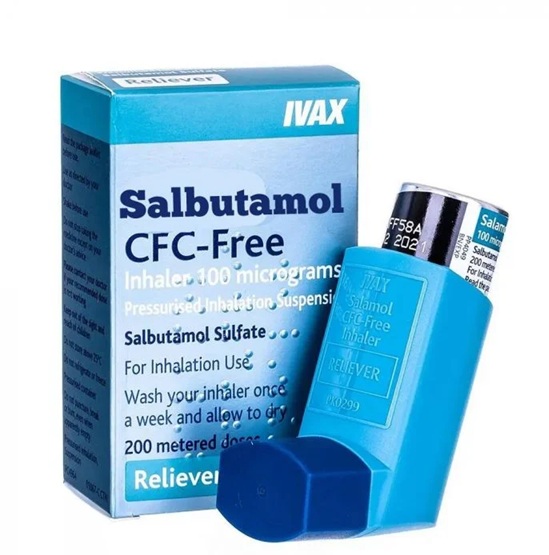What Is a Salbutamol Inhaler?
A Salbutamol inhaler is a prescription-only asthma treatment used to quickly relieve symptoms like wheezing, breathlessness, and tightness in the chest. It contains salbutamol, a fast-acting bronchodilator that works by relaxing the muscles in the airways. This allows more air to flow in and out of the lungs, making it easier to breathe during asthma attacks or flare-ups.
What Is a Salbutamol Inhaler Used For?
Doctors prescribe salbutamol inhalers to:
— Relieve sudden asthma symptoms (wheezing, coughing, breathlessness)
— Manage flare-ups caused by triggers such as exercise or allergens
— Help treat symptoms of chronic conditions like COPD
— Act as a ‘reliever inhaler’ when symptoms appear
It’s not used daily for prevention—instead, it’s taken as needed when symptoms arise.
How Does a Salbutamol Inhaler Work?
Salbutamol is a bronchodilator that opens the airways by relaxing the muscles around them. It acts on beta-2 receptors in the lungs, which helps reduce tightness and allows you to breathe more easily.
You’ll usually feel the effect within minutes, and it can last up to 4–6 hours. The inhaler doesn’t prevent symptoms from starting—but it’s effective at stopping them once they appear.
How Should a Salbutamol Inhaler Be Used?
Use your inhaler exactly as prescribed. Here’s a general guide:
— Shake the inhaler well before each use
— Breathe out fully, place the mouthpiece between your lips, and press down as you breathe in slowly
— Hold your breath for around 10 seconds, then breathe out
— Wait 30 seconds before taking a second puff, if advised
— Don’t exceed the recommended daily dose
— Rinse your mouth after use if you’re using a spacer
Always follow your doctor or pharmacist’s instructions and check your inhaler regularly to make sure it’s not empty.
Are There Any Side Effects?
Like all medicines, salbutamol can cause side effects—though not everyone gets them. Most are mild and short-term.
Common side effects:
— Shaky hands
— Faster heartbeat
— Headache
— Muscle cramps
Uncommon or rare side effects:
— Irritation in the mouth or throat
— Low potassium levels
— Dizziness
Serious side effects (seek urgent medical help):
— Chest pain
— Difficulty breathing that gets worse after using the inhaler
— Allergic reactions such as swelling, rash, or trouble swallowing
If you’re ever unsure, contact your GP or pharmacist for advice.
Who Should Avoid a Salbutamol Inhaler?
Salbutamol isn’t suitable for everyone. Avoid using it if:
— You’re allergic to salbutamol or any other ingredient in the inhaler
— You have certain heart problems such as arrhythmia or angina (unless advised by your doctor)
— You’re using other medicines that affect blood pressure or heart rhythm without medical guidance
Always speak to your GP before starting if you have underlying conditions, or you’re pregnant or breastfeeding.
How Should a Salbutamol Inhaler Be Stored?
— Store below 30°C and away from direct sunlight
— Keep the canister away from heat or open flames—even when empty
— Don’t puncture or burn the inhaler
— Keep out of sight and reach of children
— Check the expiry date regularly and return expired or unused inhalers to your pharmacy
